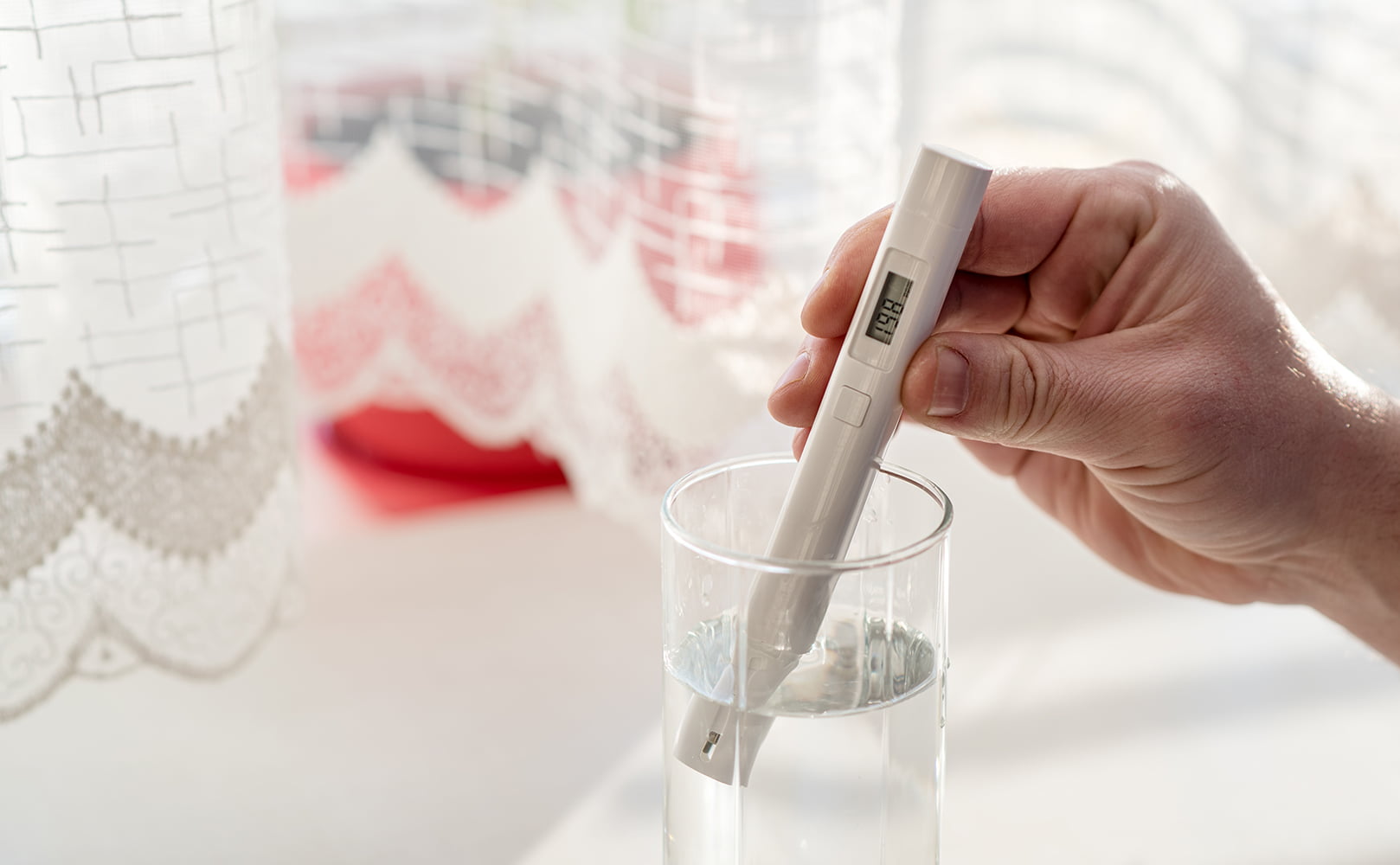Reverse Osmosis Water Tastes Metallic? Here Is What to Do!
Written by: Alexandra Uta // Last Updated: Aug 11, 2023
This page may contain affiliate links. If you buy a product or service through such a link we earn a commission at no extra cost to you. Learn more.
Noticing an unusual taste in your reverse osmosis water is generally a cause for concern.
Reverse osmosis is very thorough in terms of removing impurities and contaminants leaving you with pure water, so it should have no taste about it at all.
Troubleshooting should start with identifying the type of taste, as this can help you narrow down the possible causes. If you’re dealing with a metallic taste in particular, this guide is for you.
Key Takeaways
- A metallic taste in your reverse osmosis water can be caused by the water running through copper or other metallic tubing and reacting with it.
- Another possible explanation is high levels of leftover TDS in the RO water.
- Solutions involve remineralizing your water, using a different segment of piping that doesn’t go through copper, or more frequent maintenance of the reverse osmosis system.
Why Reverse Osmosis Water Tastes Metallic
Reverse osmosis water can develop a metallic taste for several common reasons. Copper tubing is perhaps the most prominent one, but you might also have high levels of TDS in your purified water.
Low pH and Copper Tubing
Reverse osmosis water has a lower pH and is therefore slightly acidic. If your plumbing uses copper tubing, this can lead to accelerated corrosion along the interiors of your pipes. As a result, particles from the reaction end up in your water supply. And since this happens after water has passed through your reverse osmosis system, there’s no filtration left to catch and eliminate those particles.
Normally, this shouldn’t happen with a point-of-use reverse osmosis system, as those typically don’t involve any copper piping. Water is sent to a storage tank and then dispensed through the faucet, but all of that uses plastic tubing connections. If you have a whole house reverse osmosis system, that’s a different story. In that case, filtered water will run through various segments of plumbing before it reaches your faucets. The same goes for reverse osmosis systems hooked up to refrigerators. Some fridges and ice makers use copper piping internally.
By the way, copper pipes aren’t the only culprit. This can happen to any metal pipes.
High Levels of Leftover TDS
A common misconception about reverse osmosis is that it removes 100% of the dissolved solids in filtered water. While they get pretty close, they are not perfect in this regard. The typical TDS reduction rate of a reverse osmosis system operating without issues is around 90% to 99%.
This means that you’ll still have some levels of TDS in your filtered water. And since it’s a percentage of the TDS levels of the input water, filtering water that’s especially heavily contaminated might leave you with a noticeable concentration of TDS in the filtered water.
Various dissolved solids can contribute to a metallic taste in water, including sulfates, chlorides, and bicarbonates.
How to Eliminate Metallic Taste in RO Water
Once you’ve identified the root cause for your metallic taste, you can proceed to the next step – eliminating the problem. Note that this issue is not always easy to resolve, especially when it comes to heavily contaminated feedwater.
Balance pH Levels (Remineralize)
If you add a remineralization filter to your reverse osmosis setup, this can help balance the pH levels of the filtered water. That way, you can avoid corrosion issues with copper/metal piping.
As an added bonus, this can also be helpful in your diet. One of the few downsides to reverse osmosis water is that it lacks all those minerals naturally found in water. Many people add a remineralization filter for this reason.
Avoid Copper Piping
If possible, try to avoid any plumbing connections involving copper piping. This requires some knowledge of your home’s plumbing, and might not always be possible depending on the layout of your home and your filtration needs. It’s best to talk to a plumber if you want to ensure that you understand your situation fully.
Replace Filters/RO Membrane
It’s also possible that you just need to do some basic maintenance on your reverse osmosis system. The reverse osmosis membrane, as well as any pre and post-filters used in your setup, must be regularly swapped out to ensure the proper operation of the system. For the membrane, the ideal frequency is around once every 2 to 5 years. For other filters, it varies, but it’s usually around 6-12 months.
What Should RO Water Taste Like?
Reverse osmosis water should have no taste or smell. That’s because it’s pretty much only pure water and nothing else – which has no taste by default.
Normally, the taste of water is affected by the presence and concentration of various impurities naturally found in it.
If you have any questions about why your RO water tastes metallic please don’t hesitate to leave a comment below!
Information provided on BOS is for educational purposes only. The products and services we review may not be right for your individual circumstances.
We adhere to strict editorial guidelines. Rest assured, the opinions expressed have not been provided, reviewed, or otherwise endorsed by our partners – they are unbiased, independent, and the author’s alone. Our licensed experts fact-check all content for accuracy. It is accurate as of the date posted and to the best of our knowledge.


